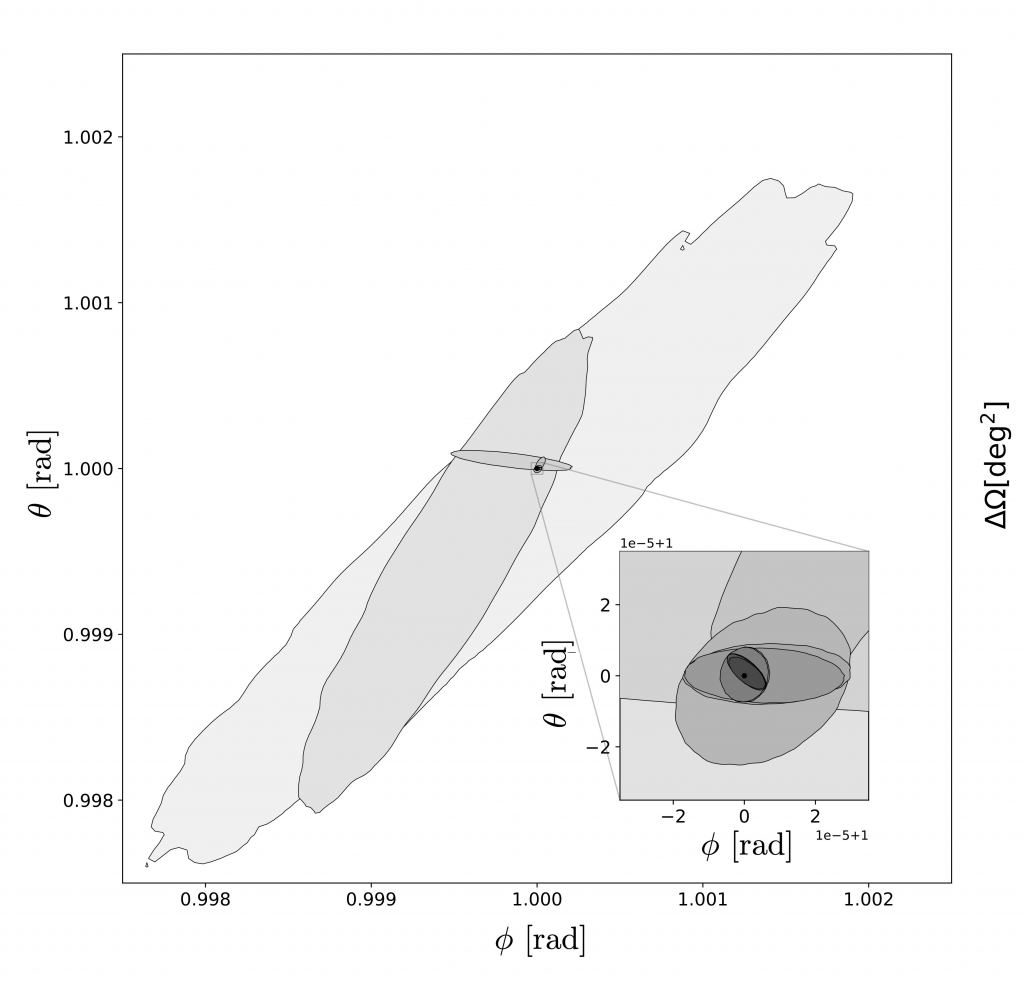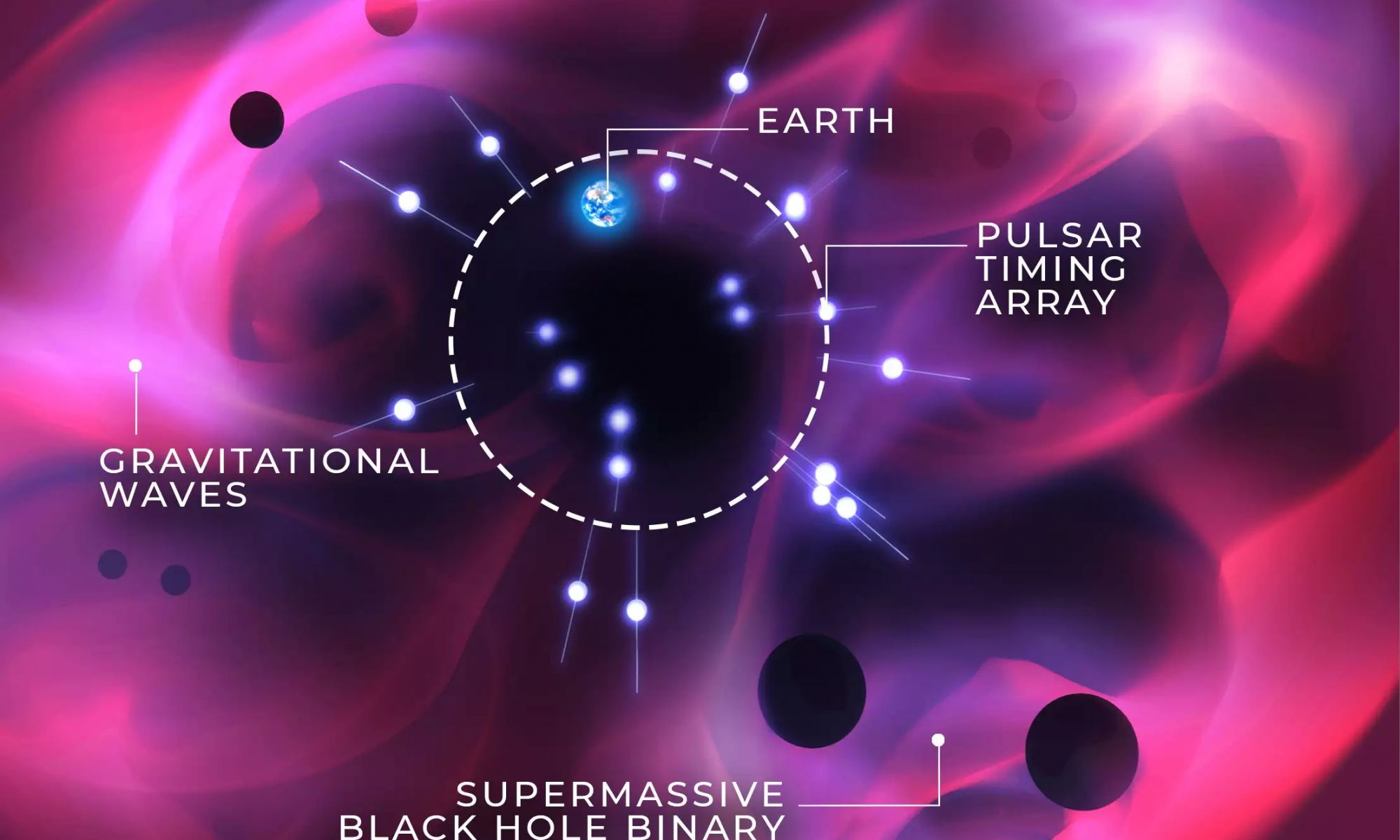Current gravitational wave observatories have two significant limitations. The first is that they can only observe powerful gravitational bursts such as the mergers of black holes and neutron stars. The second is that they can only observe these mergers for wavelengths on the order of hundreds to thousands of kilometers. This means we can only observe stellar mass mergers. Of course, there’s a lot of interesting gravitational astronomy going on at other wavelengths and noise levels, which has motivated astronomers to get clever. One of these clever ideas is to use pulsars as a telescope.
The concept is known as a pulsar timing array (PTA). Pulsars are rotating neutron stars with a strong magnetic field aligned in such a way that it sweeps a burst of radio energy toward Earth with each rotation. We see them as a very regular radio flash. Some pulsars, known as millisecond pulsars, rotate so quickly that they emit hundreds of radio pulses a second. Since the rotation of a neutron star is almost as regular as clockwork, pulsars can be used as a kind of cosmic timepiece.
Because of this, if a pulsar moves in any way, such as orbiting a star, the relative motion of the pulsar causes the pulses to shift slightly. We can measure these shifts with extreme accuracy. Our observations are so precise pulsars were used to measure the orbital decay of binary systems as indirect evidence of gravitational waves long before we could observe them directly.
Even when pulsars aren’t part of a binary system, small gravitational tugs cause them to shift slightly. So when a gravitational wave passes through them, their pulses will shift by a tiny amount. These shifts are essentially at the random fluctuation level of the pulses themselves, so we can’t see the gravitational wave effect from a single pulsar. We need observations of lots of pulsars to see the statistical fluctuations. Hence, we need an array of pulsar timings.

Earlier this year astronomers from the NANOGrav used an array of 67 pulsars with 15 years of data and were able to measure the background gravitational rumble of the Universe. The likely sources of this background are supermassive binary black holes (SMBHs), but the results weren’t entirely conclusive. One problem with the data is that while the team could measure the gravitational waves, they couldn’t pinpoint the point of origin for them.
There are several ongoing PTA projects, meaning that we will soon have a wealth of observational data. In a new study, a team proposes how this data could be used to pinpoint the sources of background gravitational waves. Their idea focuses on making precise distance measurements of the pulsars in an array. At the moment, while we know the distance to some pulsars very accurately, the distance of many pulsars is fuzzy. Detailed observations of PTA pulsars through observatories such as the Very Long Baseline Array could give us the precision we need. Knowing both the distance and the timing variation of a pulsar would give us a range for the source. With an array of pulsars, ranges would overlap to triangulate the source.
As the paper shows, a good level of accuracy could be obtained with a PTA of only a dozen pulsars. This initial study only focused on a 2-dimensional array, but a more 3D array should also be reasonably accurate. Certainly accurate enough to prove whether these background waves come from supermassive binary black holes, or something we don’t yet fully understand.
Reference: Kato, Ryo, and Keitaro Takahashi. “Precision of localization of single gravitational-wave source with pulsar timing array.” arXiv preprint arXiv:2308.10419 (2023).

